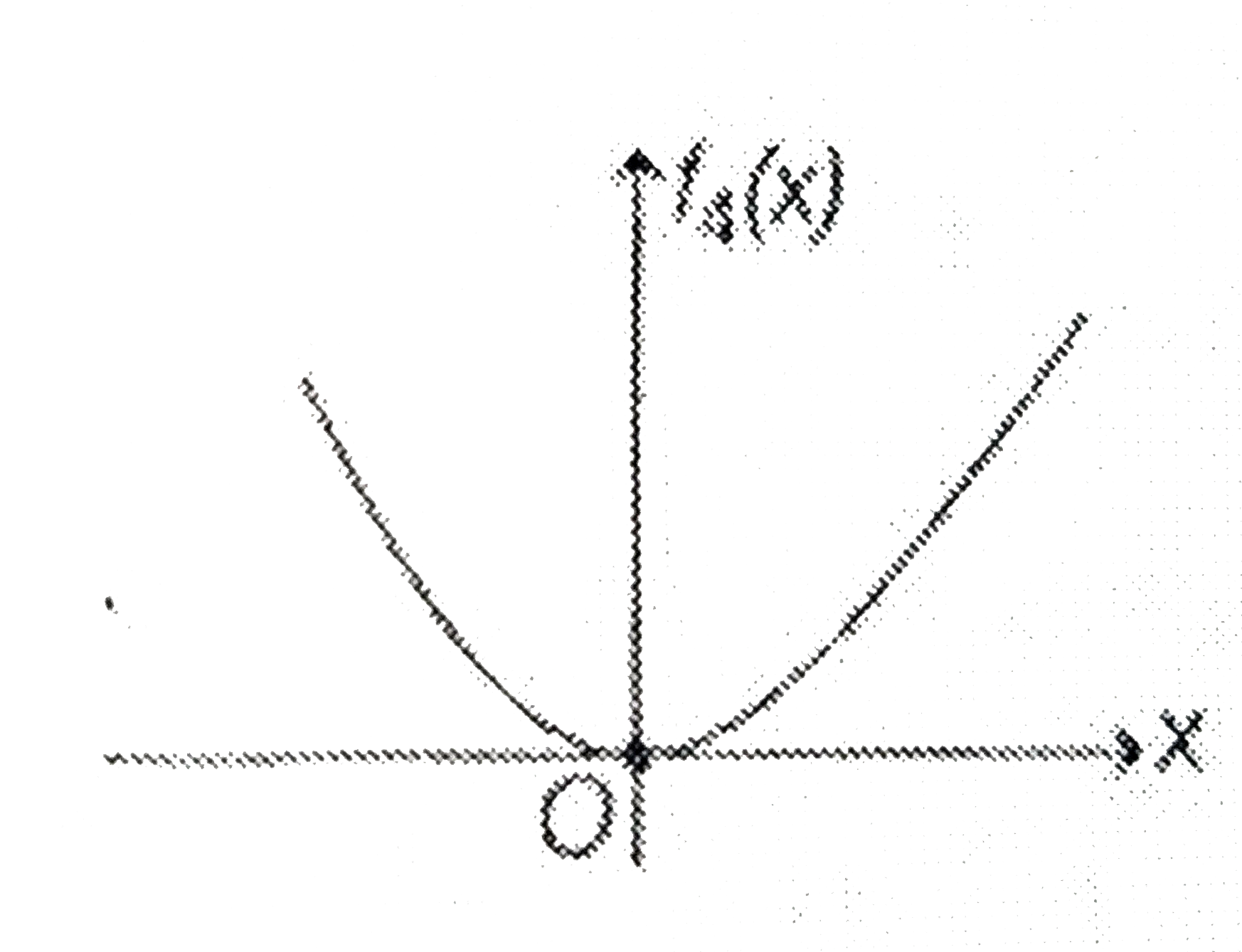Let f1:R→R,f2:[0,∞)→R,f3:R→R and f4:R→[0,∞) be defined by f1(x)={∣x∣ if x<0; ex if x≥0;f2(x)=x2; f3(x)={sinx if x<0 ; x if x≥0; f4(x)={f2(f1(x)) if x<0 f2(f1(x)) if x≥0 then f4 isSolution in Tamil
ABCDrpsq
ABCDprsq
ABCDrpqs
ABCDprqs
The correct Answer is:D
PLAN
(i) For such questions, we need ot property define the functions and then we draw their graphs.
(ii) From the graphs, we can examine the function for continuity. defferentiability, one-one and onto.
f1(x)={−x,x<0ex,x≥0
f2(x)=x2,x≥0
f3(x)={sinx,x<0x,x≥0
f4(x)={f2(f1(x)),x<0f2(f1(x))−1,x≥0
Now, f2(f1(x))={x2,x<0e2x,x≥0
⇒f4(x)={x2,x<0e2x−1,x≥0
As f4(x) continuous,f'4(x)={2x,x<02e2x,x>0

f4(0) is not defined. Its range is [0,∞).
Thus, range=codomain=[0,∞),thus f4 is onto.
Also, horizontal line (drawn parallel ot X-axis) meets hte curve more than once, thus function is not one-one.
Similar Questions
Suppose f1 and f2 are non-zero one-one functions from R to R . Is f1f2 necessarily one-one? Justify your answer. Here, f1f2:R→R is given by (f1f2)(x)=f1(x)f2(x) for all x∈R .
View SolutionLet f1:R→R,f2:[0,∞)→R,f3:R→R be three function defined as
f1(x)={|x|x<0exx≥0,f2(x)=x2,f3(x)={f2(f1(x))x<0f2(f1(x))−1x≥0 then f3(x) is:
View SolutionIf f1(x)=x,f2(x)=1−x,f3(x)=1x,f4(x)=11−x,f5(x)=xx−x,f5(x)=xx−1,,f6(x)=x−1x suppose that f6(fm(x))=f4(x) and fn(f4(x))=f3(x), then m=5 (b) n=5 (c) m=6 (d) n=6
View SolutionLet f1(x)={x,x≤x≤1and1x>1and0,otherwise f2(x)=f1(−x) for all x abd f3(x)=−f2(x) for all x and f4(x)=−f3(−x) for all x Which of the following is necessarily true?
View SolutionTRUE/FALSE:If f_1(x) and f_2(x) are defined on domains D_1 and D_2 ,respectively, then f_1 (x) + f_2(x) is defined on D_1 nn D_2 .
View SolutionIf f_1(x) and f_2(x) are defined on domains D_1 and D_2 ,respectively, then f_1 (x) + f_2(x) is defined on D_1 nn D_2 .
View SolutionFor x in RR - {0, 1}, let f_1(x) =1/x, f_2(x) = 1-x and f_3(x) = 1/(1-x) be three given functions. If a function, J(x) satisfies (f_2oJ_of_1)(x) = f_3(x) then J(x) is equal to :
View Solution
